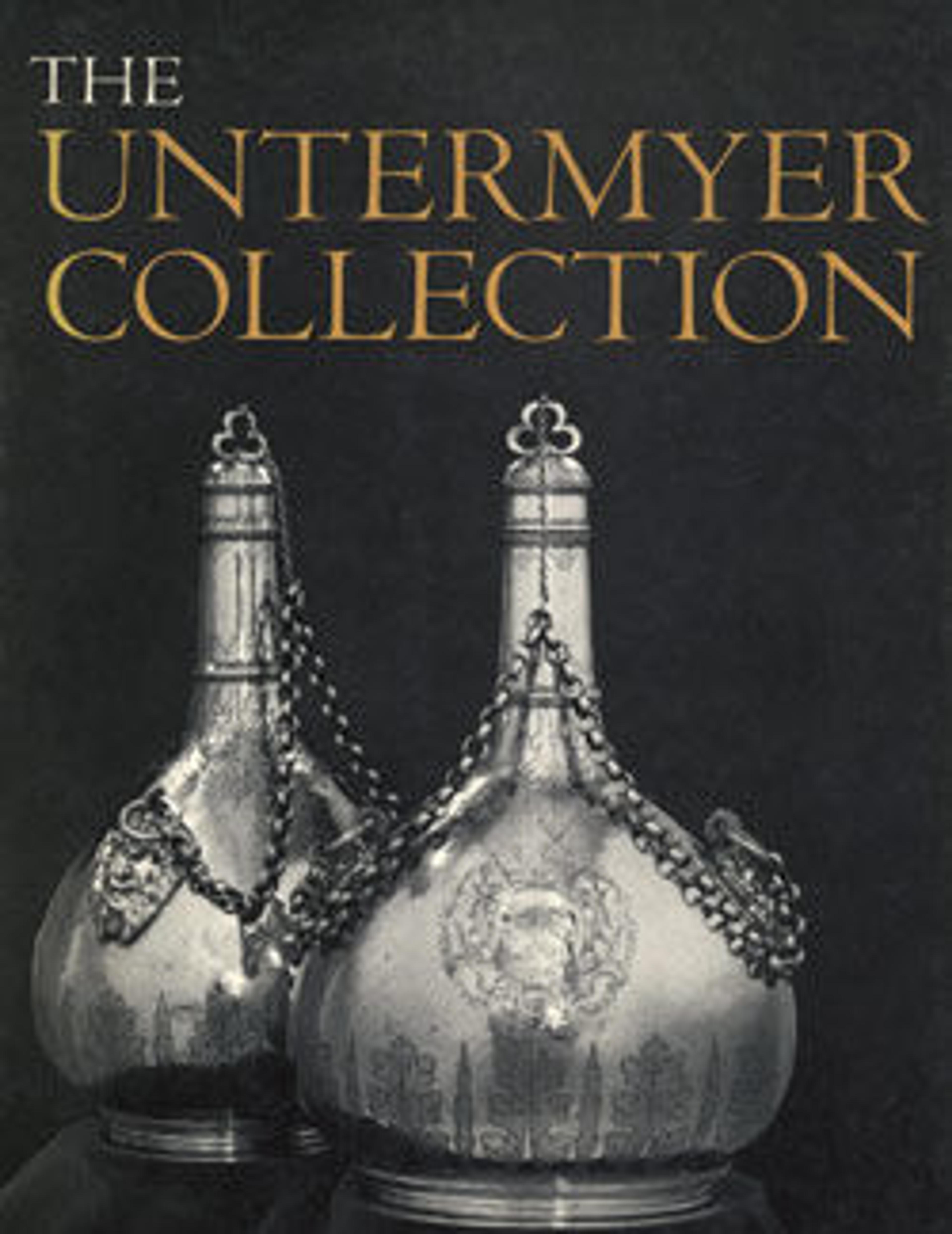Plate with Wife Beating Husband
The scene on this copper plate is sometimes thought to represent Aristotle being ridden by Phyllis, but it is more accurately identified as a comic depiction of woman’s tyrannical rule.
Its humor relies in part on the longstanding association between women and spinning. The object at the left of the plate represents a fixed distaff, which was used to spin wool by hand. Once spun onto a spindle, the yarn would be wound off with a cross-reel such as that held by the man. The fact that a man could be reduced to hank winding would alone have been quite amusing to medieval viewers, but that he has been reduced to a most embarrassing position and is in the process of being beaten - possibly for not correctly performing even this simplest of tasks - can only be viewed as a domestic satire.
A plate of this size and depth could have served either as a charge on which to carry large portions of food to the table, or as a basin into which water could be poured.
Its humor relies in part on the longstanding association between women and spinning. The object at the left of the plate represents a fixed distaff, which was used to spin wool by hand. Once spun onto a spindle, the yarn would be wound off with a cross-reel such as that held by the man. The fact that a man could be reduced to hank winding would alone have been quite amusing to medieval viewers, but that he has been reduced to a most embarrassing position and is in the process of being beaten - possibly for not correctly performing even this simplest of tasks - can only be viewed as a domestic satire.
A plate of this size and depth could have served either as a charge on which to carry large portions of food to the table, or as a basin into which water could be poured.
Artwork Details
- Title:Plate with Wife Beating Husband
- Date:ca. 1480
- Geography:Made in Dinant or Malines, Netherlands
- Culture:Netherlandish
- Medium:Copper alloy, wrought
- Dimensions:Overall: 3 7/8 x 20 1/4 in. (9.8 x 51.5 cm)
- Classification:Metalwork-Copper alloy
- Credit Line:Gift of Irwin Untermyer, 1964
- Object Number:64.101.1499
- Curatorial Department: Medieval Art and The Cloisters
More Artwork
Research Resources
The Met provides unparalleled resources for research and welcomes an international community of students and scholars. The Met's Open Access API is where creators and researchers can connect to the The Met collection. Open Access data and public domain images are available for unrestricted commercial and noncommercial use without permission or fee.
To request images under copyright and other restrictions, please use this Image Request form.
Feedback
We continue to research and examine historical and cultural context for objects in The Met collection. If you have comments or questions about this object record, please contact us using the form below. The Museum looks forward to receiving your comments.
